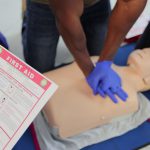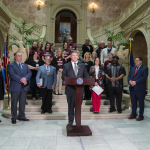More than 326,000 people have heart attacks each year at homes, workplaces and other settings, and nearly 90 percent die, often because bystanders don’t know how to perform CPR or are afraid they’ll do something wrong, according to the American Heart Association (AHA).
The 2015 Guidelines Update for Cardiopulmonary Resuscitation (CPR) and Emergency Cardiovascular Care, published in Circulation: Journal of the American Heart Association, encourage people to act fast to get help, perform CPR if they have been trained and use automatic external defibrillators (AED) when available to help rescue sudden cardiac arrest victims.
“Many public buildings throughout the United States have an AED on the premises. They are easy to use and can be very effective at getting the heart re-started in the crucial, early moments after cardiac arrest and before emergency medical personnel arrive,” said Clifton Callaway, M.D., Ph.D., vice-chair of emergency medicine at UPMC and chair of the AHA’s Emergency Cardiovascular Care committee.
The guidelines also encourage healthcare systems to not only provide CPR training to all employees but provide refresher courses more often to ensure hospitals can deliver the highest quality of care. According to the AHA, nearly 200,000 cardiac arrests occur each year in hospitals and, even for those who have been trained in CPR, these skills can begin to decline after only a few months.
“The 2015 update calls for integrated systems of care that participate in continuous quality improvement and provide a common framework for both community and health care-based resuscitation systems,” Dr. Callaway said. “We must create a culture of action that benefits the entire community, inside and outside the hospital setting.”








